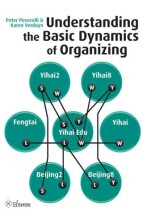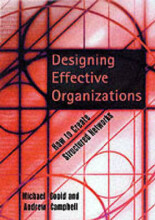Rao: Institutional change in Toque Ville: Nouvelle cuisine as an identity movement in French gastronomy
17 important questions on Rao: Institutional change in Toque Ville: Nouvelle cuisine as an identity movement in French gastronomy
The article of Rao depicts (toont) identity movements that strive to expand individual autonomy as motors of institutional change. What does the article propose?
What is they study of Rao about?
The study of Rao shows how identity movements create institutional gaps, how?
- Higher grades + faster learning
- Never study anything twice
- 100% sure, 100% understanding
What happens when the number of activists who occupy key positions in field-wide organizations increase? + formulate Rao's first hypothesis.
H1: The greater the sociopolitical legitimacy of activists, the greater is the extent to which actors abandon classical cuisine for a nouvelle cuisine.
What happened when favorable media coverage of nouvelle cuisine arose? Formulate Rao's second hypothesis.
H2: The greater the theorization of new roles, the greater is the extent to which actors abandon classical cuisine for nouvelle cuisine.
What happens when the number of defectors (overlopers) grows? (Rao) which hypothesis belongs to this thought?
H3: The greater the number of defectors weighted by their reputation and extent of defection, the greater is the extent to which actors abandon classical cuisine for nouvelle cuisine.
What happens when the gains that accrue to defectors embracing the new role identity become greater? Which hypothesis belongs to this? (Rao)
H4: The greater the reputational gains the accrue to defectors, the greater is the extent to which actors abandon classical cuisine for nouvelle cuisine.
Rao formulates a 5th hypothesis regarding the identity-discrepant cues. Which one?
5b: Theorization is likely to be a stronger identity-discrepant cue than gains to defectors.
The findings reported by Rao advance the literature of cultural-frame instutionalism, social movement theory, and social identity theory. Which hypotheses are supported.
What does the self-categorization theory mean? (Rao)
1. Social mobility: exit their group and join another
2. Social creativity: change the criteria of comparison which makes the in-group more favorable
3. Social change: compete directly with the out-group to alter the relative status of both groups through collective action.
How did the institutional gaps arise? (Rao)
What does Rao mean with spinoff movements?
Rao proposes that identity movements in the profession critique the existing logic and role identity as constraint on autonomy, and they offer a new logic and role identity emphasizing expanded autonomy. Which 4 types of identity-discrepant cues as the source of change are discussed?
2. Theorization of new roles to be adopted
3. Defections of peers from the traditional logic to the insurgent (opstandige) logic
4. Gains that accrue (toekomen) to prior defectors (overlopers)
> Rao studies how those 4 cues disseminated by the nouvelle cuisine movement induced elite chefs to abandon the classical cuisine.
What does social movement theory and cultural-frame institutionalism suggests?
What is meant with institutional change? (3) (Rao)
2. Deinstitutionalization or the dissolution (ontbinding) of an existing logic or governance structure
3. Reinstitutionalization where an existing logic/governance is replace by a new logic or governance structure.
Explain how identity movements arise? (Rao).
What is an institutional logic? (2) (Rao)
1. Social identity, self image derived by actors when the categorize themselves as members of a collectivity or occupants of a role
2. A system of incentives that rewards actors for conformity to a given logic and penalizes actors for violations of behavior.
> Institutional logics are the organizing principle that furnish guidelines to actors as to how to behave.
The question on the page originate from the summary of the following study material:
- A unique study and practice tool
- Never study anything twice again
- Get the grades you hope for
- 100% sure, 100% understanding






























